Cycle 3! – Thank a Black Woman
Posted: December 12, 2019 Filed under: Kylee Smith | Tags: Black women, dance, family, hair, installation, intermedia, spirit, thank you Leave a comment »The last round of this project was very fulfilling. I was so happy to be able to share my work with some new faces and for it to continue to be received so well by my classmates. The feedback that I got afterwards was incredibly affirming–it was a valuable and meaningful experience for my participants. Everything didn’t go perfect (I forgot to press record the first time around, whoops lol), but I decided to just go with it, and not be frantic about it. I would love another opportunity to dig the work just a little bit more because I feel that there is still more there to excavate.
This class, and this project in particular, has been inspiring in my personal research practice, and I am looking for ways to deepen these kinds of intermedia installation explorations and how they might inform the way I am crafting my MFA thesis.
I am extremely grateful for this experience. Thank you Oded and Alex for being tremendous supporters of a work that wasn’t about you. That doesn’t happen often.
Go tell a Black woman thank you. We deserve to be celebrated.
I will leave you with some images from my last exhibition.
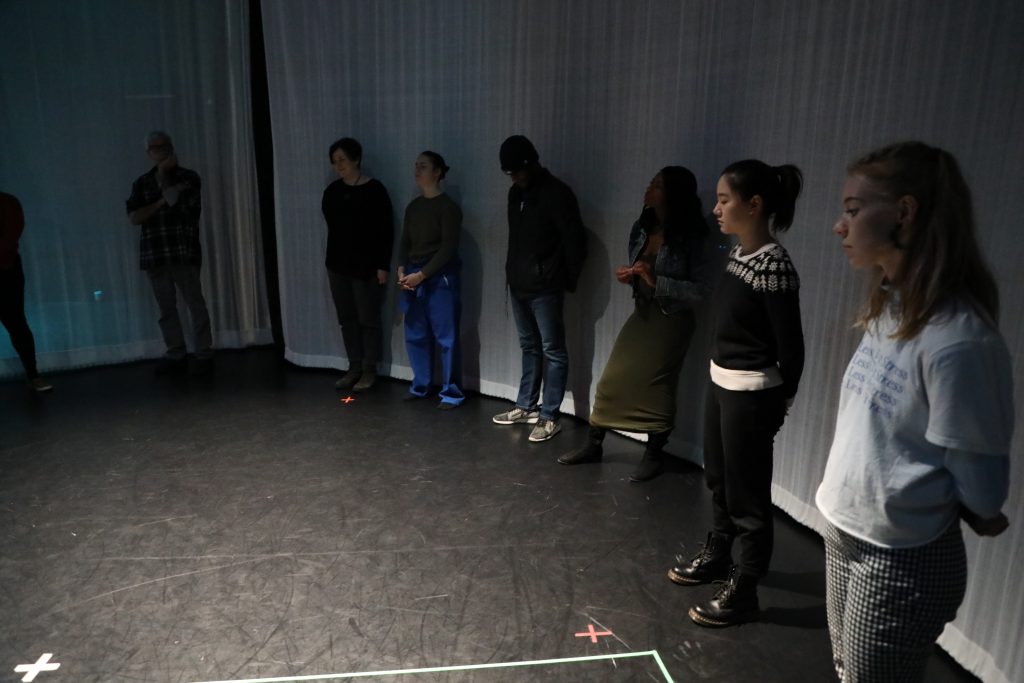
The participants listen back to the thank you’s 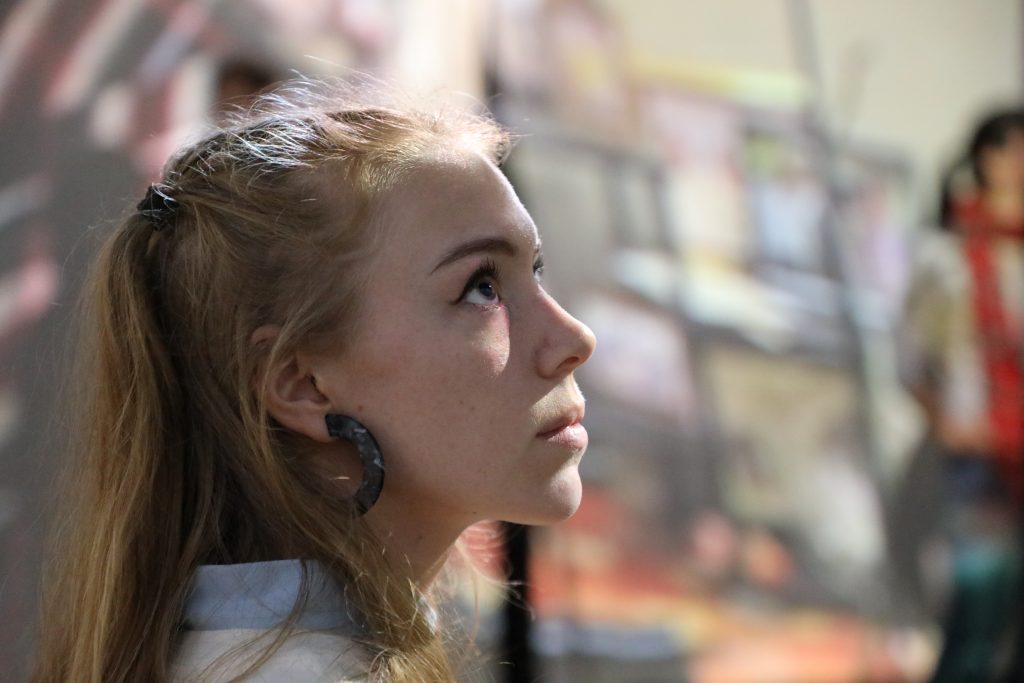
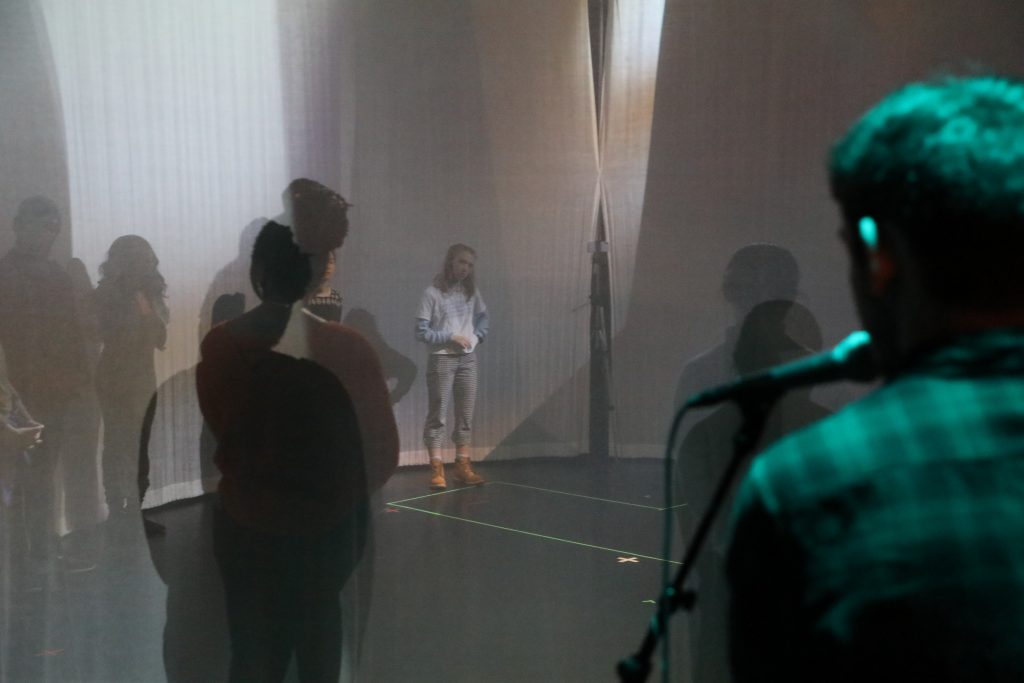
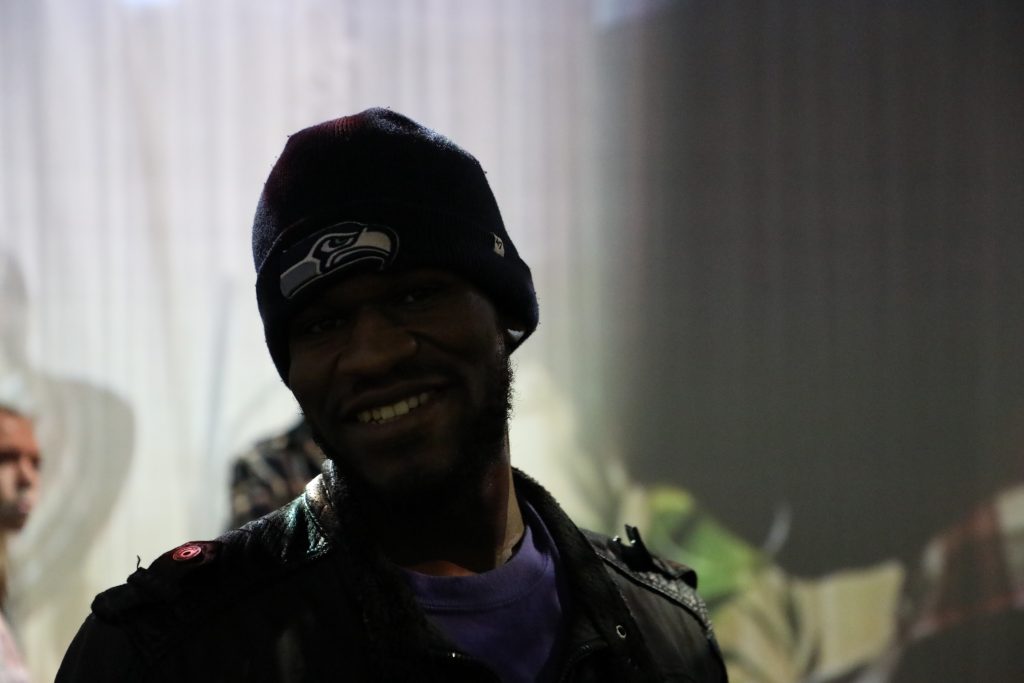
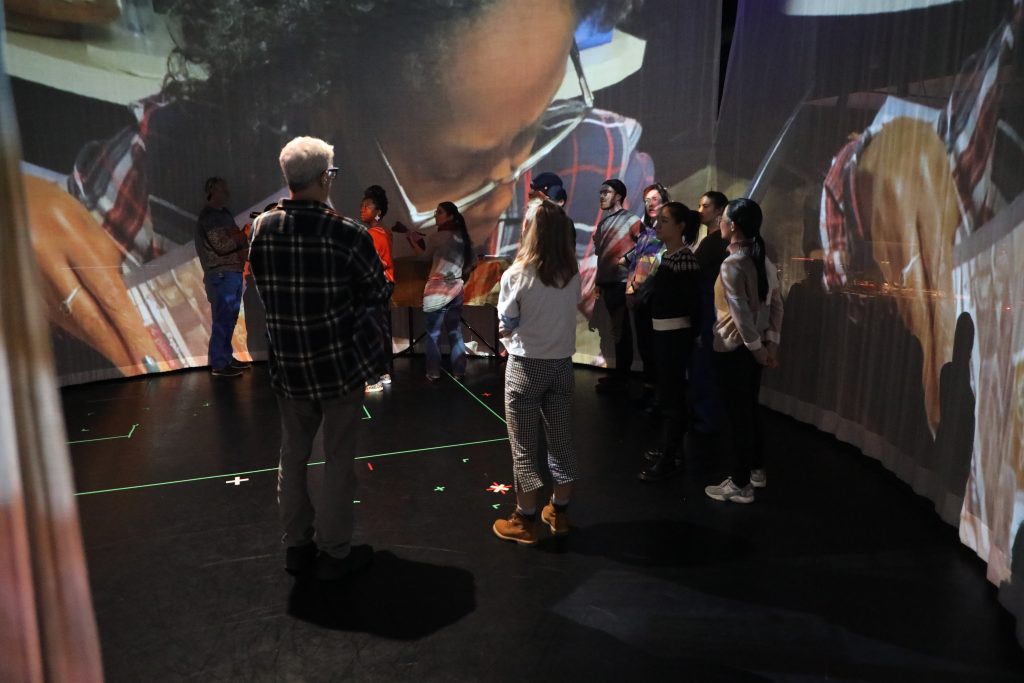
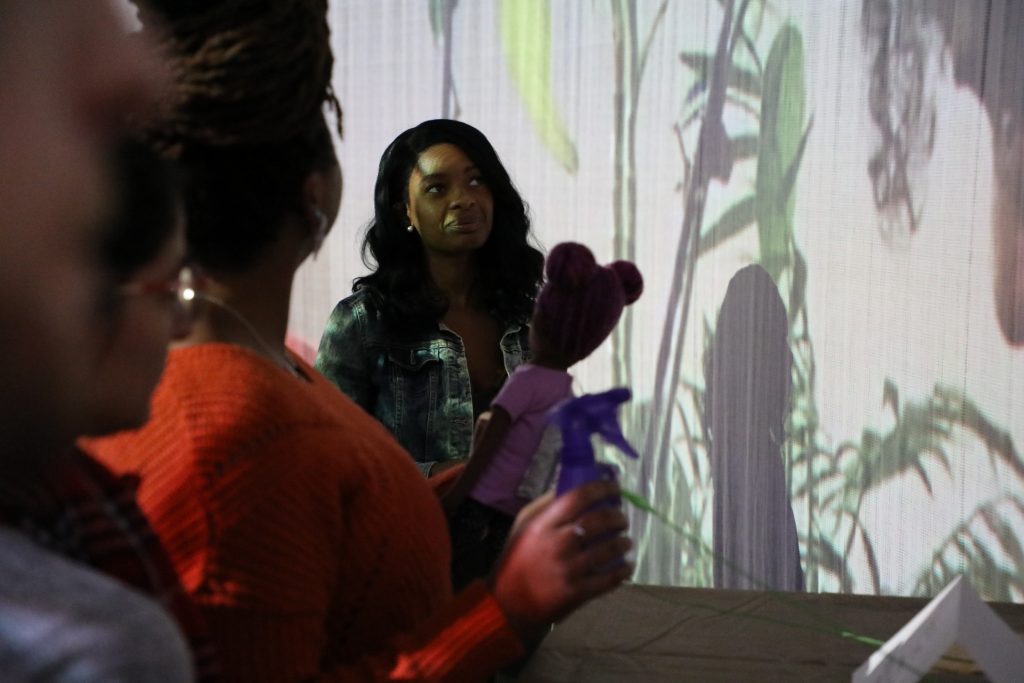
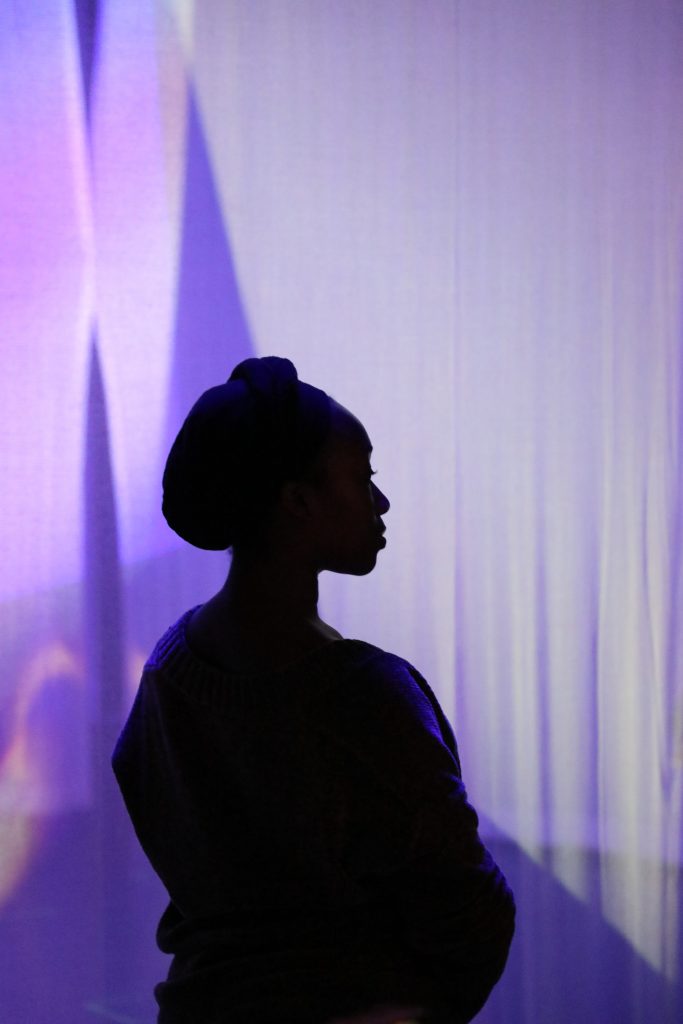
The Black woman behind it all, me — Kylee C. Smith
Cycle 2
Posted: November 19, 2019 Filed under: Uncategorized Leave a comment »Booo tech sucks. Not really, but I was really excited for this cycle because I figured out the most technologically advanced thing I’ve ever done thus far in my life to implement into this cycle only to have my presentation be hampered by significant tech problems from sound to video quality. I think everyone was able to get the gist of my ideas though, so not the end of the world, but still disappointing.
Nevertheless, I was super proud of myself for learning basic electrical engineering and how to close MakeyMakey circuits to use in my Isadora patch. Phase 3 of my project brings three videos of my mom and I at home (or rather will as I’m making those videos over Thanksgiving Break when I go home.), and participants will be able to toggle between the three videos by interacting with one of my dolls (also to be retrieved from home! Shoutout to Baby Jesus for standing in for us from Brianna Rae Johnson’s desk) and various Black hair products that I have set up on a table. They doll and products outfitted with MakeyMakey buttons connected to keyboard watcher actors in Isadora, allowing it to switch between each of the three video playing scenes.
I learned a lot about Isadora and actors in constructing these mechanics, and while after spending two hours figuring out to make Isadora switch between three videos at random all from within the same scene, Alex came to me at the next class with a much simpler option, which is how we ended up putting them in separate scenes and using a keyboard watcher to trigger a Jump++ actor to move forward and backward between scenes.
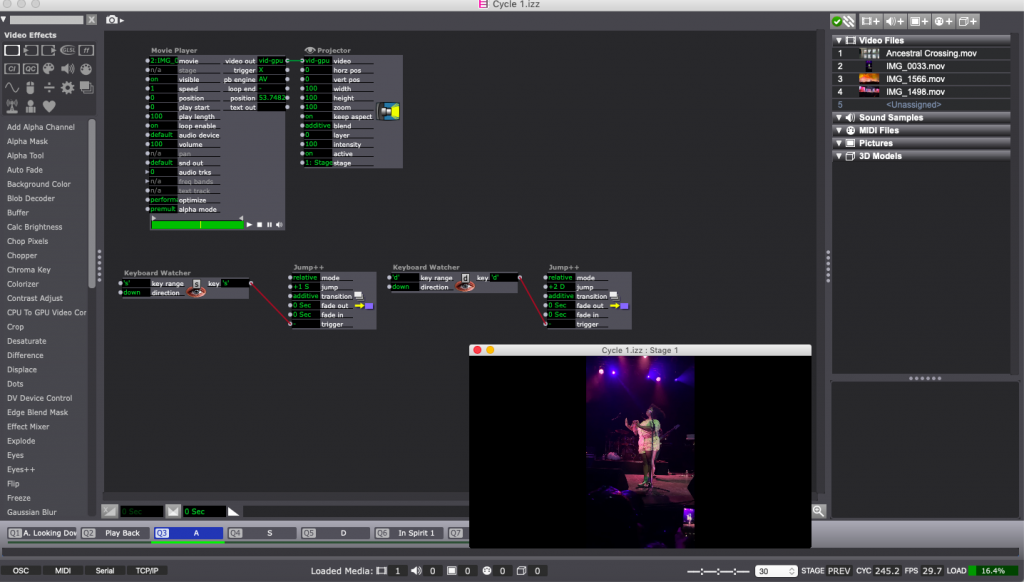
Once I figured out the patchwork, making the buttons was quite simple. I just used some pieces of packing cardboard that was in a box from a recent Ikea purchase, wrapped them in foil, and clipped alligator head end of the wire to the foil. Baby Jesus (which will be one of my own Barbies in C3) served as the ground, so by picking up the doll and one of the hair products, you could switch the video that was playing.
One additional change that I made was removing the written option for the “Thank a Black Woman” phase that opens the experience. I thought it would better streamline entry inside the space. A “thank you” is how you gain access to the space.
Feedback was still very good. The “thank you” section continues to resonate deeply. There were more people in the space thanks to guests from the Sonder film that was visiting, so the playback moment was longer, which was really great. I’m still towing around with the idea of pre-recording thank yous to intersperse throughout Phase 3.
Things I Need to Do/Make for Cycle 3:
* Make larger “Thank a Black Woman” signage for entrance by microphone
* Projection map videos
* Enhance hair product station (table cloth, pictures, etc) and make instructional signage
* Shoot film of my mom and I and edit/compile footage
Cycle 1
Posted: November 5, 2019 Filed under: Uncategorized Leave a comment »Cycle 1 went really well, and I am very excited to continue working on this project. My work centers Black women and moves from Black women at large in the lives of my audience to my own specific experience as a Black woman.
I was very intentional about wanting to craft an environment in the MOLAB, so I used the white scrims to create a circle in the middle of the room onto which I projected my video. However, before the participants could enter the space, they were met with my “Thank a Black Woman” station, which invited them to thank a Black woman by name that is in their own lives or give a thank you to Black women at large. They had the option to speak their thank you into the microphone that was set up, write the woman’s name on a sticky note and post it to the poster board that was set up on the table, or do both. Once they had recorded their thank you, they could enter the space.
I used an updated version of my patch from PP3 to capture the audio from the recording (whoops, I switched the camera to movie to be completely manual and forgot to enter the patch right at the top) and so they could see the flashes of the shapes and colors moving on the walls of the circle they stood inside of. After everyone said their thank you and entered the space, the play back of the voiced thank you’s played. This moment was very meaningful; everyone stood in the space along the outside edges making a circle and listened to each other. It was very powerful to hold space for Black women in this way… for women who are too often over looked to be given their flowers for once.
The next scene of the patch is meant to be a “Black women at home” segment, showing me and my mom doing things like washing and doing our hair (often a shared experience between Black mother’s and daughters across the globe) and caring for ourselves and our homes. I don’t have that footage yet so I was unable to show. However, I plan to bring in some physical objects into the space that will be connected to a Makey Makey to open and close circuits to switch between various video feeds.
The last scene speaks to me and my Black womanhood most specifically and is a 3 minute clip of a movement exploration of a research I am calling “ancestral crossings” in which I seek to bring about a kinesthetic shift to spirit through movement in order to shift the temporal planes between past and present so that I might commune with my ancestors once again. The last minute includes a pre-recorded spoken text narrated by me. The audience spread out and watched as the video was played on the the three individual scrims. They commented on the texture of having to watch my movement through another person.
As the video came to a close, everyone settled again onto the periphery, further solidifying the circularity of the space which felt important to me as circles and circularity carry a great deal of meaning in Black culture and life across the diaspora. The feedback I received was really spectacular. I was particularly interested to know how the “Thank a Black Woman” station would be received, and it was exciting to hear that my classmates wanted that moment to go on for even longer. I’m now considering ways to incorporate more by perhaps pre-recording the some thank you to have playing in the background intermittently throughout the third scene.
It was an immense pleasure to have another Black woman in the room when I presented, as we are who I do my work for. Sage Crump of Complex Movements, a Detroit based artists collective that was in residency at ACCAD last week came to visit with our class after she heard about the work that we were doing. It was an honor and a privilege to be in her presence and to hear her thoughts on not only my own work, but also that of my classmates. Thank you for your time and energy, Sage.
You can listen to the thank you’s at the download link below.
PP3 — You can do it!
Posted: November 5, 2019 Filed under: Uncategorized Leave a comment »When we were first given the parameters of this project, I was immediately anxious because I felt like it was outside of my skill and capability. This class has definitely been a crash course in Isadora and I’m still not the most proficient at using this program. The assignment was to spend no more than 8 hours using Isadora to put together an experience that revealed a mystery; bonus points were given for making a group activity that organized people in the space. The idea of mystery was really confusing to me because the only thing that immediately came to mind was TouchOSC and Kinect tools that I don’t know know how to use independently yet. However, Alex assured me that he would help me learn the components of which I was unsure, and was very helpful in showing me some actors that I could use to explore the idea that I had which was to play a game of “Telephone” with the class.
After having the class line up one after the other in front of the microphone, I used the mic to record the “secret” while it was passed down the line. I had played with locomoting some shapes and that reacted to the levels of the voices as they spoke in to the mic. Initially, I had wanted to use the sound frequency bands actor in addition to the sound level watcher actor, but when I started working on the project at home, the frequency bands would not output any data. Unbeknownst to the participants, I was recording the “secret” as it passed down the telephone so that at the end, I could “reveal” the mystery of what the initial message was and what it became as it was went from person to person.
It was really exciting actually to hear the play back and listen to the initial message be remixed, translated into Chinese and then back to English, to finally end in the last iteration. It was fun for the class to hear their voices and see that the flashing, moving shapes on screen actually meant something and were not just arbitrary.
Overall, the most complicated thing about PP3 was learning how to program the camera to start and stop recording the audio. To do this I used a camera to movie actor, and played with automating the trigger to start, switch to stop, and then stop. Ultimately, I ended up setting up a gate and a toggle to control the flow to the start/stop trigger and using keyboard watcher that I manually controlled to open and close the gate so that the triggers could pass through.
In spite of my initial concerns, I found this project to be a nice challenge. I had even been exploring ways to integrate a Makey Makey into the presentation, but realized I don’t have enough USB ports on my personal computer to support both an Isadora USB key, the USB for the mic and a Makey Makey. This was definitely a project that was the result of the resources that I had available to me in regards to both skill and computer systems.
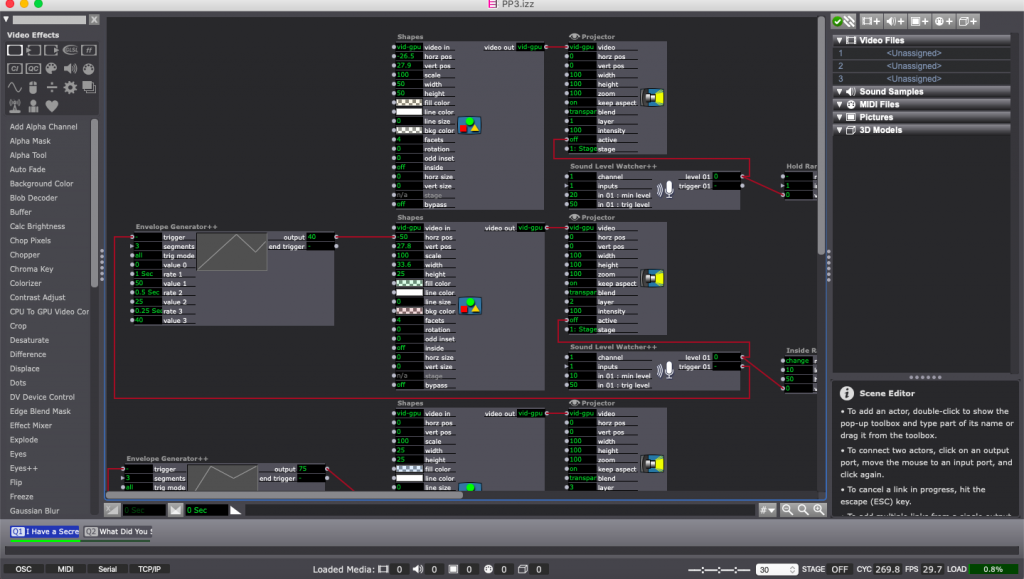
The shapes actors and the sound level watchers and envelop generators that controlled them. There were 4 in total. 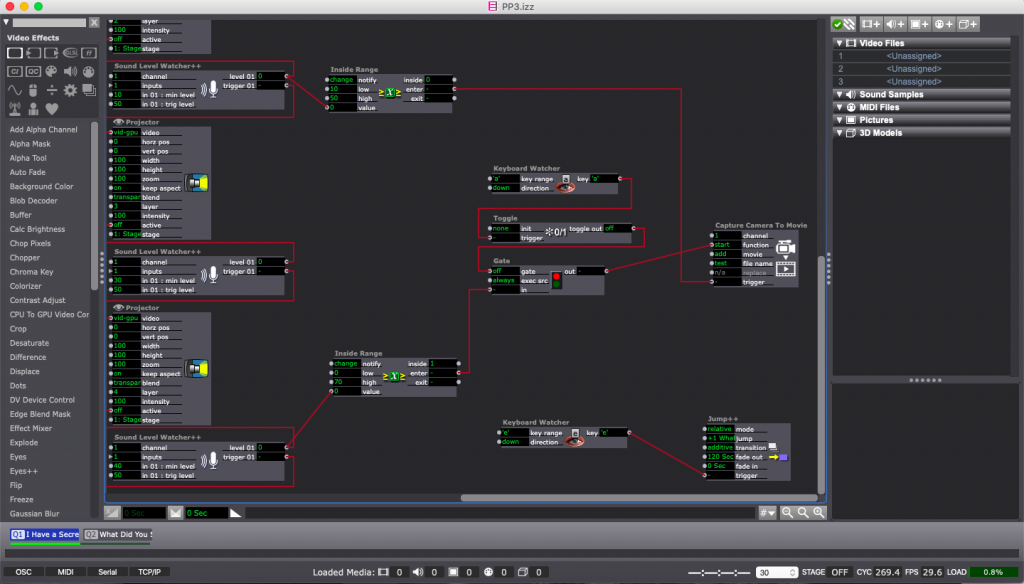
This data fed into a camera to movie actor that recorded all the sound that was picked up by the mic. 
This enter scene trigger sent a value of 2 into the the movie player, allowing the projector to play the sound recorded in the previous scene.
PP2 Documentation
Posted: September 26, 2019 Filed under: Uncategorized Leave a comment »Entering Pressure Project 2, I definitely felt much more confident. I decided for myself that my work would have merit because I was fulfilling the parameters of the project even if it felt as if it were too simple or I hadn’t spent enough time working on it. Sometimes, open-endedness can leave you feeling that you’re not doing enough because you don’t have an extremely clear and concise image of what the final outcome should be. I really worked actively to resist my desire to know if I was “doing it right,” and present something of which I was really proud of, regardless of what expectations I imagined Alex may have had. In the end, watching and engaging with everyone’s projects was really exciting. I loved the way that the diversity and breadth of our work explores questions about how we define culture, individually and societally, with input from each of our different identities, perspectives, and lived experiences.
As for my specific cultural story, I wanted to honor my late Grandma and the spirit of her hats that she left behind. I grew up understanding and admiring hats as a societal marker for Southern Black women. I crafted an original text score that I recorded to accompany some images that reflected aspects of my relationship with the story I am telling. I initially attempted to use Isadora for this project, but as part of my work included visual elements, I realized that I did not know how to make the program projects different images to one stage without layering them one over the other. With that being the case, I turned to Final Cut Pro X to put together the video linked below. (Link expires May 20, 2020)
https://osu.box.com/s/19h57e55oy83e9tn0a1v10y92zzka4n4
PP1
Posted: September 12, 2019 Filed under: Uncategorized Leave a comment »The idea of a “pressure” project had been causing me concern since the beginning of this course. I was very pleasantly surprised at how effective and useful the constraints of the “pressure” were in completing this assignment. I kept track of my time spent working on the project, setting a timer for every block of time I worked, and used all but 30 minutes. I felt that I had achieved all of the objectives of the project that I understood how to complete, and was thus, done. However, with knowledge of what some of my classmates were making, I was concerned that my I-have-no-idea-how-to-work-this-thing attempt wouldn’t be of much interest or use to the class. It was surprising to me that I had created something that everyone was intrigued by and had included enough layers to obscure the aspect controlled by the mouse watcher for so long for many of my classmates. This presentation was the first time that I felt that even my limited skills could have an interesting outcome, and it made the course objectives seem much more accessible. It was a very affirming experience. I also learned a lot from seeing what others had done; it exposed me to more of the capability of Isadora for a variety of aims and goals. Overall, I am excited to continue learning and to discover more of how I can use digital media to further my own research interests while engaging with audiences in new ways.
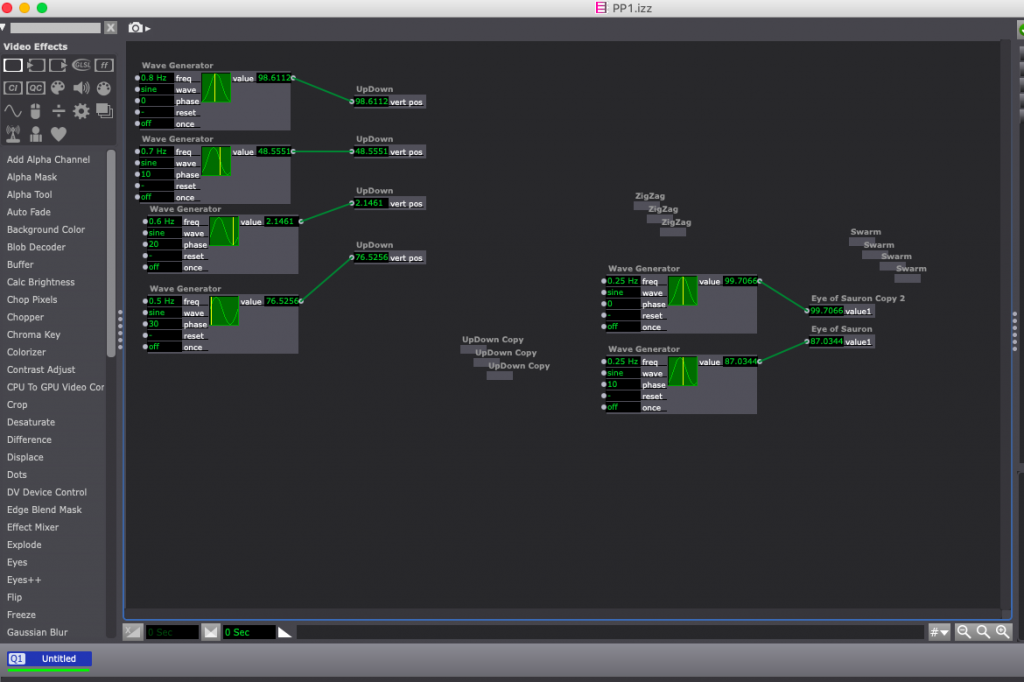

Stills from the stage view. 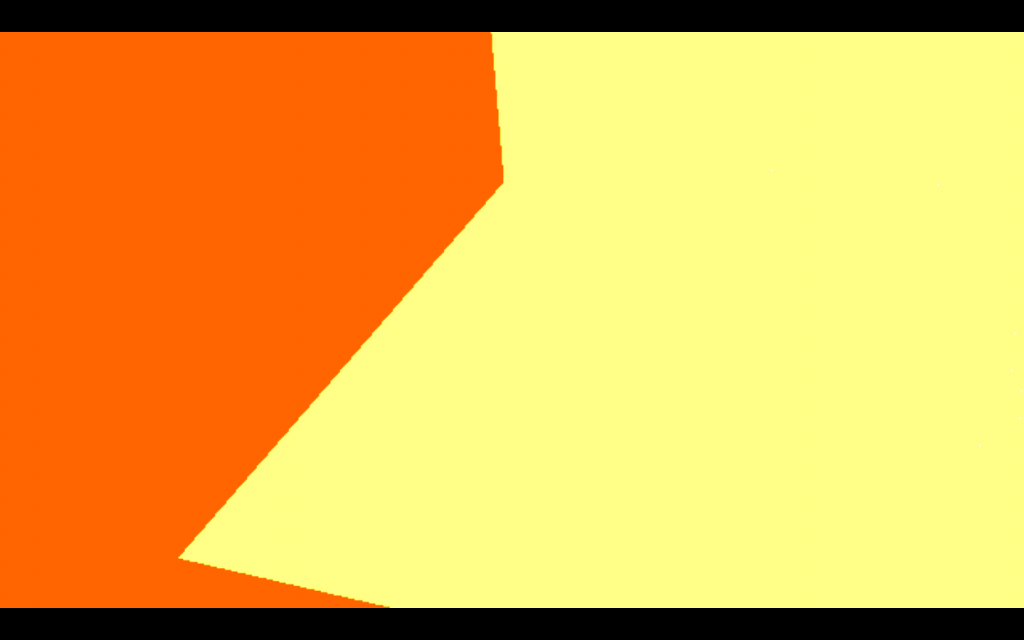

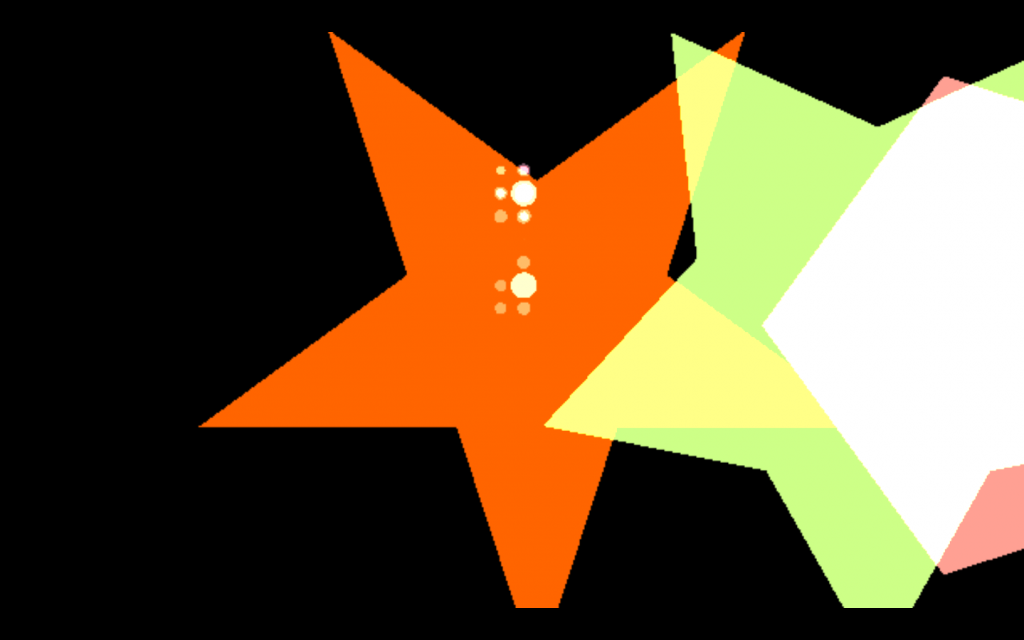
How does duplication impact color? 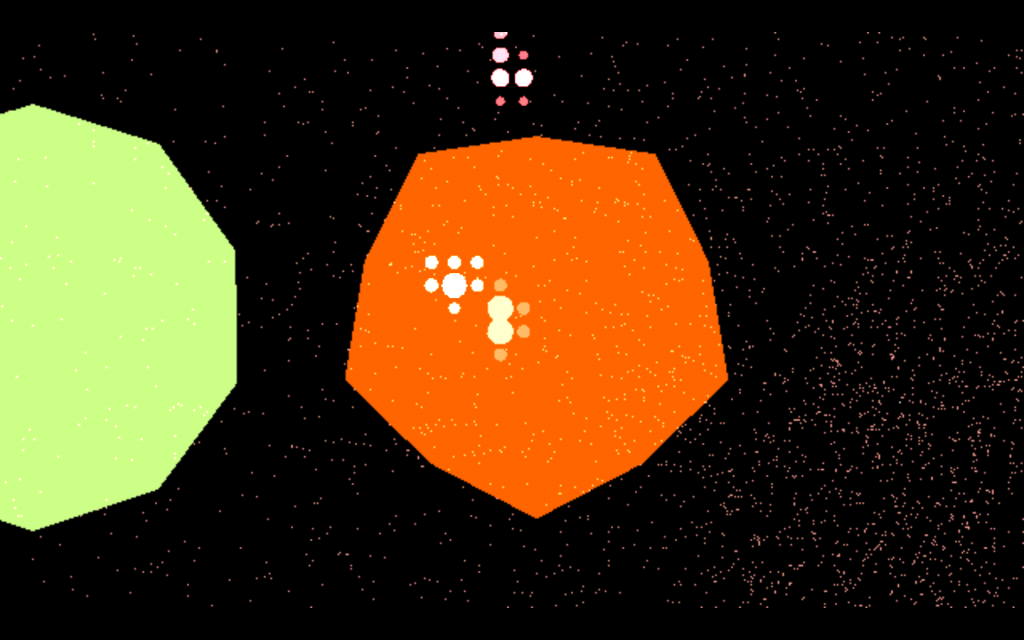
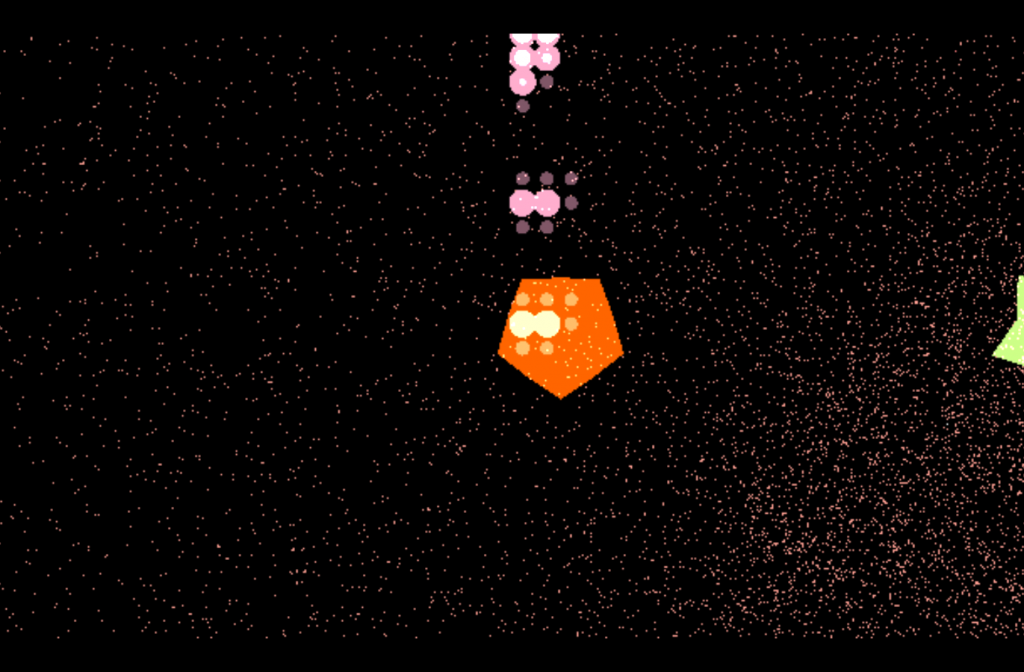
I was playing with scale and repetition.
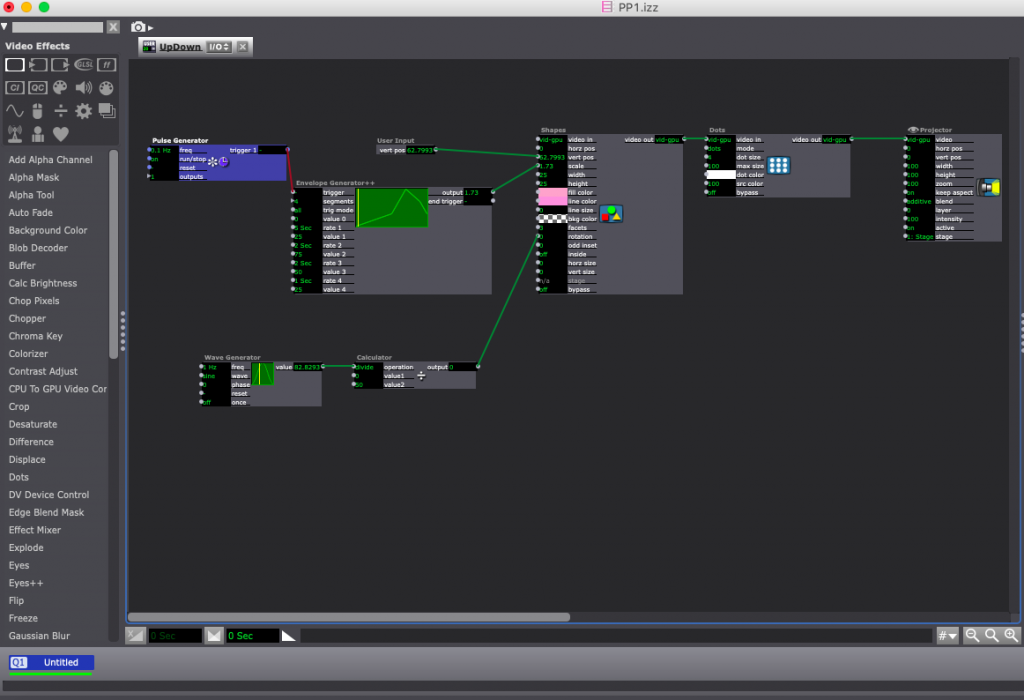
Post Bump
Posted: September 3, 2019 Filed under: Uncategorized Leave a comment »I am bumping up Robin Edigar-Seto’s post about his final project. Robin is my classmate, and not only do I love him dearly, but I was intrigued by his making/editing process and how he arrived at his final product. His method of connecting with memory and storytelling is compelling.